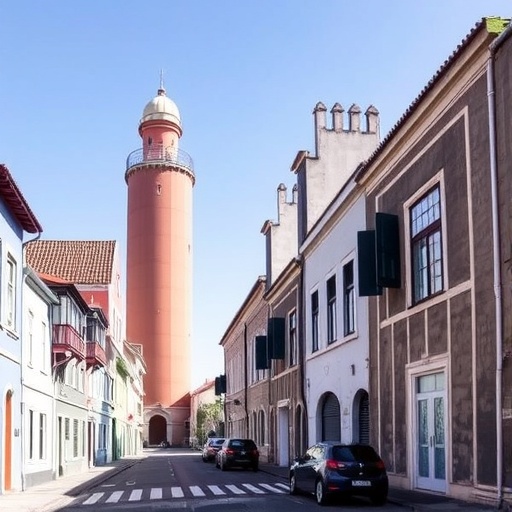The Role of Arts and Culture in Urban Regeneration of Post-Industrial Eastern Lisbon
In an ever-evolving world, cities face the challenge of adapting to social, economic, and environmental changes, especially those that have historically relied on industries that are no longer sustainable. Lisbon, a city characterized by its rich culture and vibrant arts scene, has been particularly affected by these transformations. The eastern part of this city, once the heart of industry, is now undergoing a regeneration process, and this metamorphosis highlights the pivotal role of arts and culture in reshaping urban landscapes.
Historically, eastern Lisbon was a hub of industrial activity. Factories and warehouses dotted the landscape, serving as the backbone of the city’s economy. However, as industrial activities waned, these spaces fell into disrepair, prompting urban decay. It is against this backdrop that the potential for cultural regeneration emerged, offering an alternative vision for the future. The revival of these spaces is not merely physical but also socio-cultural, providing a canvas for artistic expression and community engagement.
Recent studies have underscored the importance of cultural initiatives in urban renewal. By transforming old industrial sites into centers for art and creativity, cities can stimulate local economies, attract tourism, and foster community pride. Eastern Lisbon’s journey illustrates how the arts can breathe new life into neglected areas, turning them into thriving cultural districts that invite exploration and participation from both locals and visitors alike.
One of the most striking examples of this phenomenon can be seen in the transformation of former warehouses into art galleries and community spaces. These newly established venues present opportunities for artists to showcase their work, enabling them to engage with the public in meaningful ways. Such interactions encourage a dynamic exchange of ideas, bridging the gap between creators and their audience, ultimately enriching the fabric of urban life.
Moreover, public art installations have begun to play a significant role in the revitalization process, serving as visual landmarks that redefine the urban landscape. Murals, sculptures, and interactive art projects now adorn buildings and public spaces, contributing to a sense of place and identity. These artistic endeavors not only beautify the area but also invite critical dialogues about the past, present, and future of eastern Lisbon.
Education and community involvement are crucial components in leveraging the power of arts and culture in urban regeneration. Programs that engage local residents in creative endeavors not only cultivate talent but also foster a sense of ownership over their community. Workshops, art classes, and collaborative projects provide platforms for individuals to express themselves and contribute to the regeneration narrative, ensuring that the cultural renaissance is inclusive and representative of diverse voices.
Furthermore, the integration of cultural programming into urban planning manifests a commitment to sustainable development. As policymakers recognize the value of arts and culture in enhancing the livability of a city, they are more likely to support initiatives that prioritize artistic creativity in development projects. This alignment fosters an environment where cultural institutions can thrive while simultaneously addressing pressing urban issues such as housing, transportation, and social equity.
The impact of arts and culture on local economies cannot be overstated. Events such as art festivals, craft fairs, and cultural markets attract both residents and tourists, generating income for local businesses. The economic stimulus generated by cultural activities creates a ripple effect, particularly in areas that have previously experienced financial decline. By investing in arts and culture, eastern Lisbon is laying the groundwork for sustainable economic growth that benefits all residents.
However, the journey towards regeneration is not without challenges. Gentrification, often a consequence of urban revitalization, poses a real threat to existing communities. When new developments push out long-time residents, the very essence of a neighborhood can be lost. Balancing the influx of new investment with the preservation of cultural identity requires a nuanced approach that prioritizes inclusivity and community engagement.
To navigate these complexities, cities must adopt holistic strategies that consider the diverse needs of their populations. Engaging in community consultations, partnering with local organizations, and supporting grassroots movements are vital steps in creating a regeneration framework that resonates with all stakeholders involved. A transparent dialogue between officials, residents, and artists can help align interests and aspirations, ensuring that the regeneration process is both effective and equitable.
In conclusion, the case of eastern Lisbon serves as a compelling testament to the transformative power of arts and culture in urban regeneration. By rehabilitating neglected spaces and fostering creative initiatives, this post-industrial area is reclaiming its identity and potential. The arts are not merely a byproduct of urban renewal; they are a fundamental catalyst that drives socio-economic growth and cultural enrichment. As cities around the world grapple with similar challenges, the lessons learned from eastern Lisbon can provide invaluable insights into the importance of integrating creativity into urban planning.
As we witness the ongoing transformation of urban landscapes, it becomes increasingly clear that arts and culture are essential to building resilient communities. The synergy of creative expression and urban policy has the potential to reshape not only city blocks but also lives, crafting a narrative of renewal that is both inspiring and aspirational for future generations.
Subject of Research: Urban regeneration through arts and culture in post-industrial eastern Lisbon.
Article Title: The role of arts and culture in urban regeneration of post-industrial eastern Lisbon.
Article References:
Pomesano, L., Falanga, R. The role of arts and culture in urban regeneration of post-industrial eastern Lisbon.
Discov Cities 2, 82 (2025). https://doi.org/10.1007/s44327-025-00122-x
Image Credits: AI Generated
DOI: https://doi.org/10.1007/s44327-025-00122-x
Keywords: Urban regeneration, arts and culture, eastern Lisbon, community engagement, public art.




